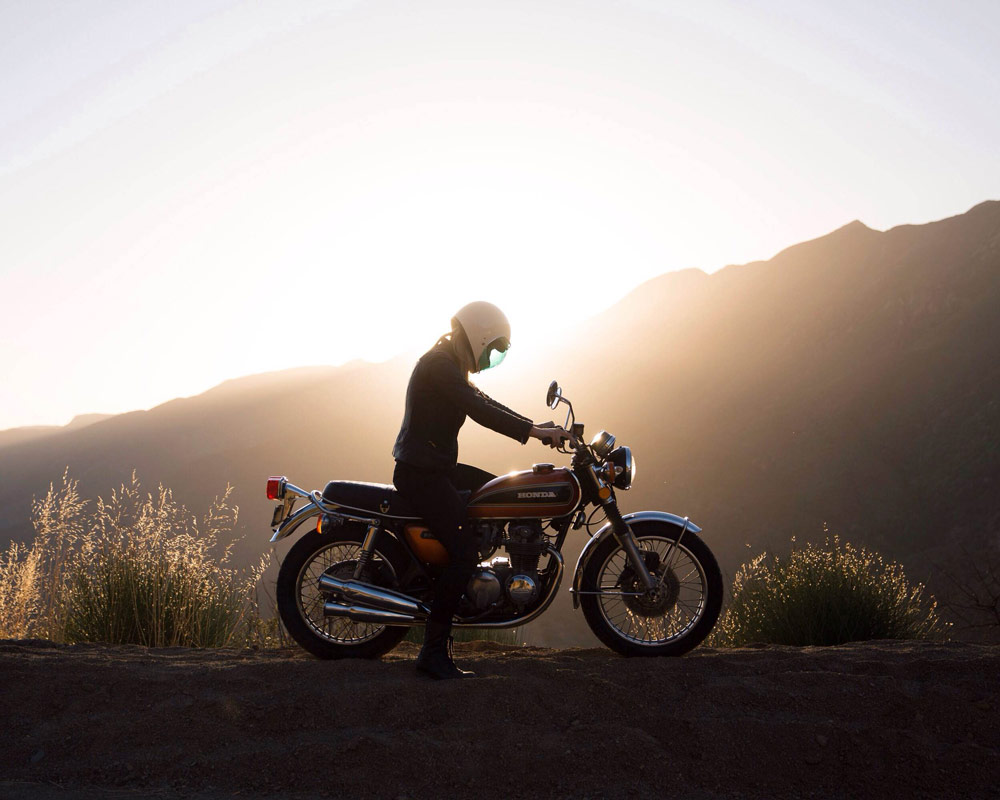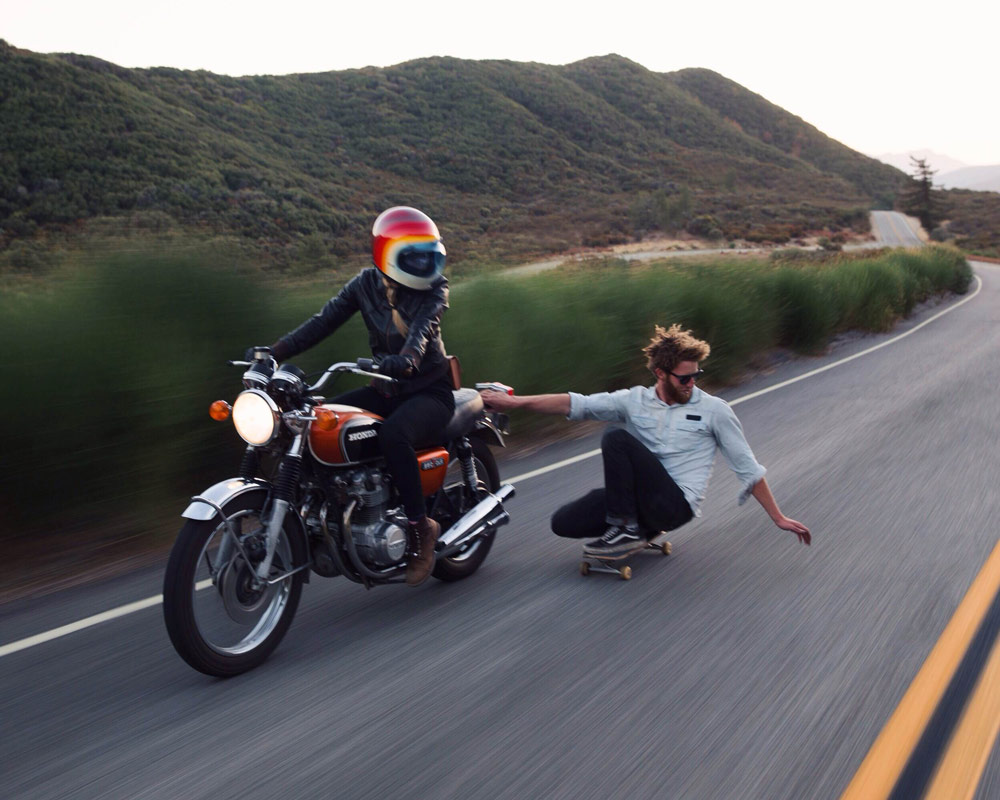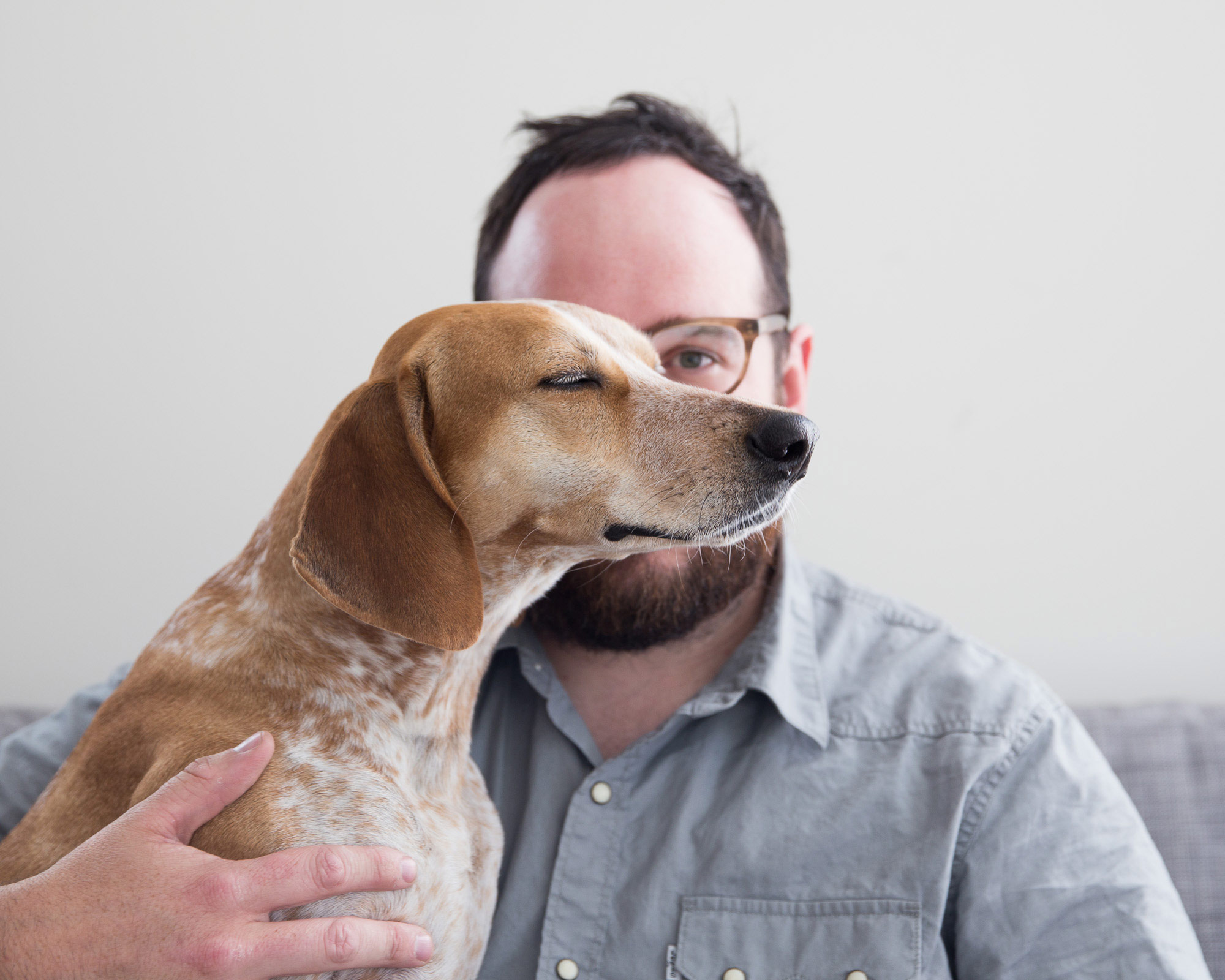
- Interview by Tina Essmaker September 16, 2014
- Photo by Theron Humphrey
Theron Humphrey
- photographer
Born and raised on the coast of North Carolina, Theron Humphrey is a photographer, nomad, and Eagle Scout, who has traversed all 50 states with his best friend, Maddie the Coonhound. When not on the road, he calls Nashville, TN, his home.
Tina: Describe your path to what you’re doing now.
I grew up in North Carolina, in a family of farmers and folks who weren’t creative types. We had paintings on our walls when I was growing up, but they were usually something you’d buy at an old department store. There wasn’t much creative expression: you worked with your hands to feed yourself and your family.
In college, I studied computers because I had enjoyed them when I was a kid. But my college roommate was an artist: he could paint, draw, and make pots out of clay. I thought that was way cooler than computers. That was when I became interested in photography and took a black-and-white darkroom class. Even though I couldn’t paint or draw, I could still express myself through light and framing, even though that sounds kind of cheesy. Like many artists who are just starting out, I began by copying the greats: Aaron Siskind, Minor White, and similar photographers who I loved.
I had an encouraging teacher, but in the end, it was the craft and science of photography that brought everything together for me. Right around the time I was graduating, digital photography was emerging as an accessible medium. When the Canon 20D came out, it could compete quality-wise with 35mm film cameras.
You didn’t start taking photographs until college?
Right. I think it was during my sophomore year, when I was 19.
And where did you attend college?
I studied photography at Savannah College of Art and Design. After graduation, I was totally burned out on academia, and I disliked photography. I hated the hoity-toityness of it: arguing for your thesis, trying to be conceptual and deep and all the clichés you find in artist statements on the wall. Nobody gives a crap! After you graduate, you feel pretty charged and then you quickly find out that nobody cares about you or your work, and you’re just floating around. Life hits you hard in the face, or at least that was my experience.
After school, I lived with my sister in Chicago. I had rejected photography and dug ditches for a year to make a living; then I worked a job constructing stages and hanging lights for concerts and festivals. One day, I woke up and said to myself, “Man, I’d rather shoot photos to feed myself than wake up at 4am to build stages.” I grew up outdoors; I was an Eagle Scout! I started looking online for jobs in that industry, and I found a job in the panhandle of Idaho, working for the women’s retail company, Coldwater Creek. I applied for the job and received a call back the next week. Almost immediately, the guy on the phone asked, “Are you an Eagle Scout?” I said, “Yeah!” and he replied, “Cool, I’m the studio manager at Coldwater Creek, and I want you to come out.” I got that job because I was an Eagle Scout—not because I was okay at taking photos. (laughing)
That was my first real adult job with a salary. I moved to Idaho, which was a wonderful place to live, and I was super grateful. For two years, I worked from 7am to 5pm shooting handbags and necklaces. The first year was pretty awesome because I was around a bunch of folks who had been doing it for a long time. I learned a lot, but after 12 months it started to become a grind. Day after day after day, 40 hours a week, I photographed handbags and necklaces. All of these realizations started weighing heavily on me: I didn’t believe in the product, I didn’t believe in where the product came from, and I didn’t believe in the vision of the company. Over the course of my second year there, I felt heavier and heavier. When you are constantly creating work for other people, you start to lose your creative soul. There is a balance, and you need to feed yourself, but if you’re only using your camera to shoot someone else’s vision, it destroys you creatively.
“When you are constantly creating work for other people, you start to lose your creative soul. There is a balance, and you need to feed yourself, but if you’re only using your camera to shoot someone else’s vision, it destroys you creatively.”
During that time, my dad called and said, “Your grandfather is going to die.” What?! I remember helping my grandfather plow the fields when I was growing up. This is not OSHA-approved, but I would stand up on the back of the plow blades to give him more weight so he could dig deeper into the soil. His passing was a pivotal moment for me.
When I flew back to North Carolina for the funeral, I brought my camera with me—I hadn’t picked it up to shoot anything that I loved for two years. All of my personal work from school had been pretty emotionless, similar to the German photographers Bernd and Hilla Becher: emotionally removed, scientific, and matter-of-fact. I took my camera and documented my grandfather’s life on his farm, and it was the first time that my photographs, especially portraits, became intimate. When I uploaded the photos to a little album on Facebook, my friends and family commented and liked them. Nobody had cared about what I was shooting before. I thought, “This is something good.” I had also made an audio cassette recording of my grandfather’s voice, and I thought, “Damn, why didn’t somebody do this with my great-grandfather?” Now, when I have kids one day, I can tell them: “This is what your granddad sounded like. This was his life.” That is precious. It struck me that photography becomes more valuable over time; it ages well.
I had been in a really bad relationship that fell apart when I returned to Idaho. I thought I was going to marry this girl—I had even bought her a ring. We lived in a small town, and one day I saw her drive past me on my way to work. Shortly after, she sent me a text that read: “You’re the most disappointing human being ever.” My heart exploded. I thought to myself, “That sucks! I’m going to go prove you wrong!” That was four years ago, and I’ve long since forgiven her—and myself—and moved on, but it served as a catalyst for me to go out into the world.
I was familiar with the world of stylists and art directors, so I decided to drive to New York City to shoot products. When I told my buddy Chris, he said, “You should take 30 days to chill and shoot something while you drive there.” It was great idea. I asked him: “What if I met 30 people and photographed them? And what if I did it every single day?” He said it was a cool, but challenging idea, and I said, “Yeah, it’s kind of a wild idea—wait, is the domain thiswildidea.com taken?” He looked at me and said, “Oh, my gosh, no.” (laughing) So we registered the domain name and he built a WordPress site for me. I set out and literally met and photographed a new person every day for 30 days. Halfway through the project, Wired’s Raw File Blog shared a link to my project on Twitter. I thought, “Woah, people I respect retweeted something I did!”
I said to my buddy, Chris, “Dude, I need to do this for a whole year and go to all 50 states.” In my mind, I needed the whole set: you can’t just have one Star Wars figure, you have to have them all! He said, “Bro, that’s going to be intense,” but I believed I could do it. He told me about Kickstarter, and I realized that I had built up a big enough body of work to prove my concept. Nowadays, a lot of people ask me for advice on running a Kickstarter campaign, but I tell them that sometimes you just need to create something on your own dime, put in the blood, sweat, and tears, and then take it to the world and say you want to take it to the next step. So, in 2011, I started my Kickstarter campaign for This Wild Idea. I used stills in my video, laid out the thesis for my vision, and raised $16,000 to live off of for the year.
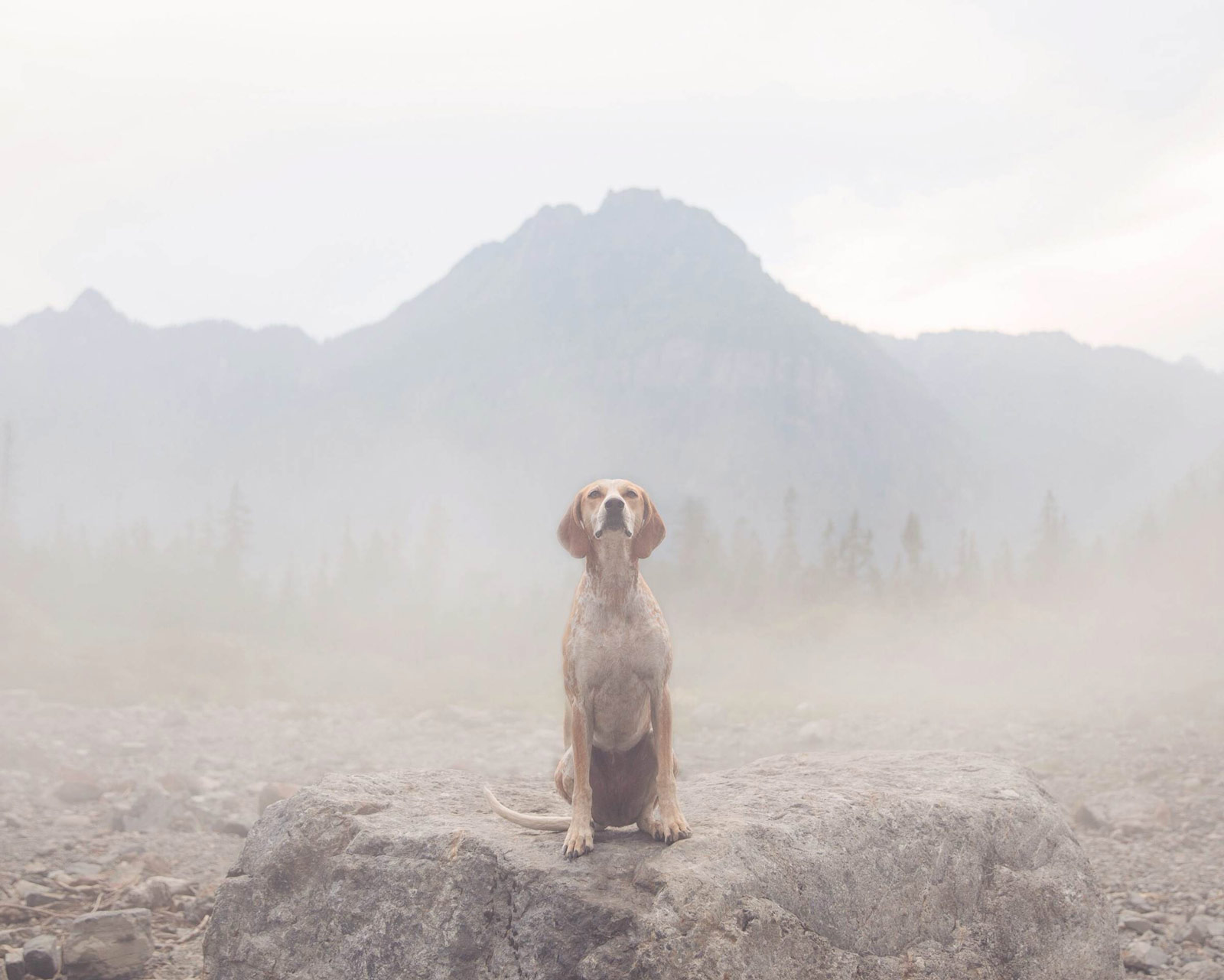
“…people ask me for advice on running a Kickstarter campaign, but I tell them that sometimes you just need to create something on your own dime, put in the blood, sweat, and tears, and then take it to the world and say you want to take it to the next step.”
Wow!
Yeah. Something cool I added to the project later on was audio: I began recording people’s voices and adding them to the corresponding stills. That project got better as I went along because I realized that the more photos there were, the better. I also became better at asking questions and telling people’s stories. One of the most rewarding results of that project was meeting and photographing people who passed away shortly after I was with them: I became the last person to document their lives. It validated the whole idea behind the project.
This isn’t a criticism of social media, but it often exists as the greatest hit. I posted a photo today, and it made me wonder how I’m supposed to continue posting great images. To grow as an artist, you have to fully pursue a difficult topic in a project. For me, introducing myself to people I don’t know and gaining their trust is really hard: it makes me uncomfortable. But that’s how I grew that year. I met someone every single day, I photographed someone every single day, and I uploaded something every single day. In the end, National Geographic picked my project up and named me as Traveler of the Year, which was a huge honor. I also went to DC to talk about my work in front of a bunch of folks who I admire and respect.
During that project, I also started receiving attention on Instagram for photos of my dog, Maddie. I had rescued Maddie from a shelter in Georgia about two months before I began traveling. John Steinbeck had Charley, and I needed my companion. (laughing) I grew up in the South, so I knew I wanted a Southern dog. I searched for “coonhound” online, and Maddie was the first one who popped up. She looked like a deer! I went to the shelter to meet her. Coonhounds are very loving, but they’re also very aloof; they follow their noses and do what they want to do. I was unsure about Maddie because she didn’t give me an affectionate, Labrador-style greeting, but as I walked her back to her kennel, she pressed her body against my leg the whole way. I thought, “I can’t put you back in a cage—that’s so sad!” So, $40 and very little paperwork later, I had a dog.
Three months into that trip, a friend said I should start using an app called Instagram. I told him that my travels weren’t about me, but he said I could use it to show daily snippets of my daily life. It was easy: take a photo, use a filter, and post. I started documenting Maddie because she’s my pup—I had no intention of making a career out of it like William Wegman. I was inspired by cultural figures like the traveling gnome or Flat Stanley, and I decided to take photos of Maddie in various places. One day, I shot a photo of her standing on the hood of my truck. My friends all loved it, and it grew from there.
“…that leap of faith that everyone talks about is real. To give up a decent-paying job to go into the unknown is terrifying, but I knew my creative soul would literally dry up and die if I kept doing what I was doing. I didn’t care if I was going to go bankrupt.”
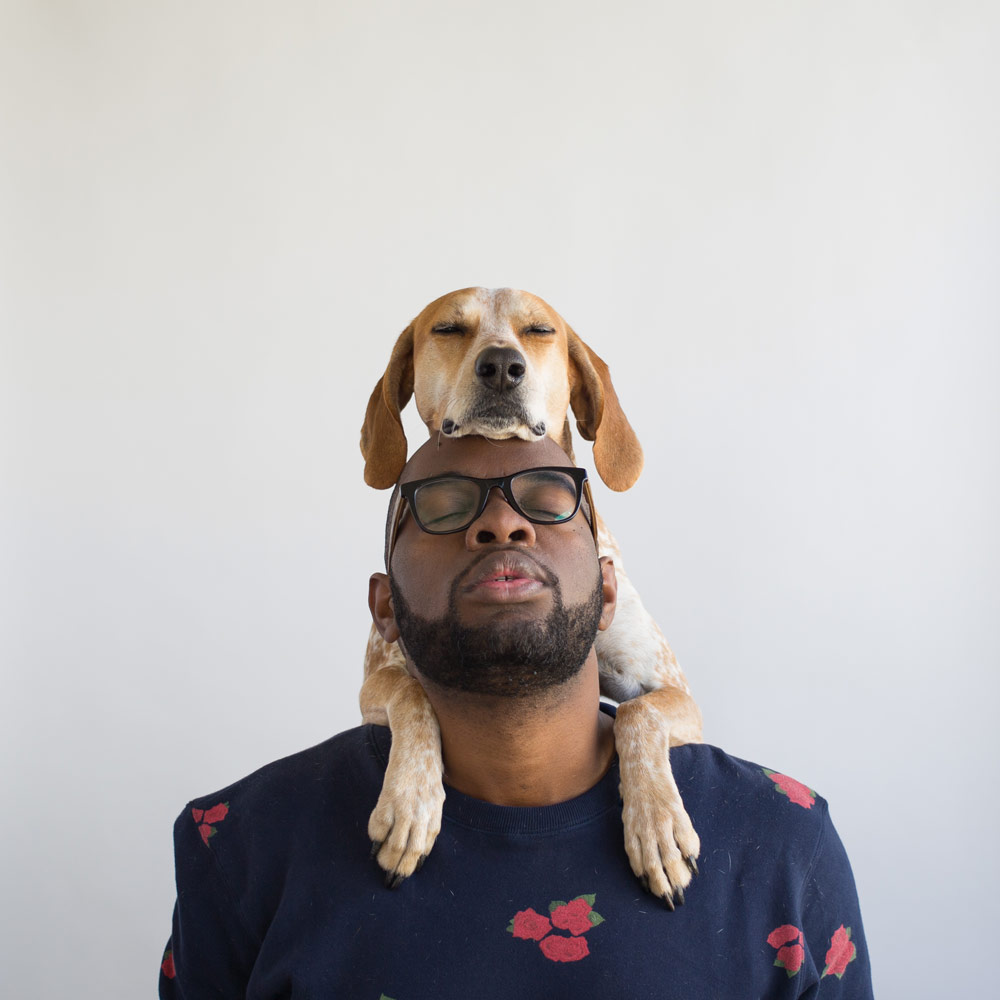
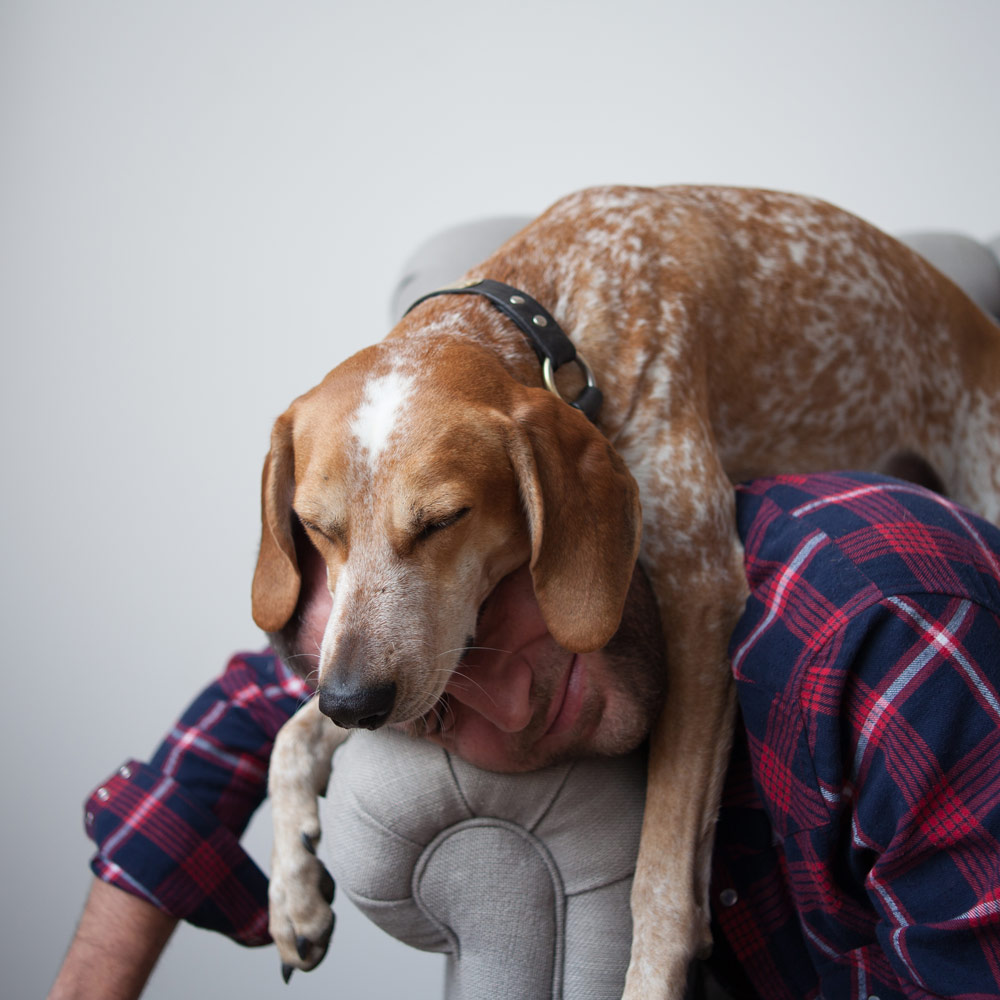
At one point, one of my friends said, “I’ll bet you can’t get her to stand on four soup cans!” I accepted the challenge, and it was one of the funniest photos I had taken. It was something whimsical that I wanted to do, but it sparked something among my followers. I thought, “What else can we do?!” Along the way, Chronicle Books saw the Tumblr site and asked if I wanted to make a book out of it, which became Maddie on Things. When I signed the book deal, I had around 15,000 Instagram followers, which is pretty small in comparison these days. I’m just grateful that people enjoyed it and gave me a chance.
When I came back from the trip, I was busy working on putting the book together. However, I had a little money from the book advance, which I used to pay off credit card debt. Around that time, an ad agency hit me up to do a job with Purina ONE®. They wanted me to take photos of people and their dogs, similar to what I had done with Maddie. I pitched an idea for a project: photograph 10 people in New York City who had rescued their dogs from shelters, and that’s how I came up with a new documentary project called Why We Rescue.
After I shot the first project for Purina ONE®, I pitched them the idea of photographing pet owners across the country, which turned into 50 States, 50 Pets, 50 Stories. I photographed people with their pets and asked them why they rescued and how their pets make their lives better. I wanted to show that shelter animals aren’t second-rate. I combined that 50-state documentary project with a 50-state book tour. It was amazing, and it exhausted me: for the second year in a row, I was visiting all 50 states, meeting folks, and shaking hands. But it was great to give thanks to the people who had supported me.
That was my first foray into commercial work: an ad agency hired me to create a project, the project was my vision, and they gave me a bunch of freedom. It spoiled me, and I quickly found out that those opportunities are very rare. Since then, Instagram has taken off for me, and I’ve been shooting projects for brands like Ray-Ban and Jack Daniel’s. I’m living the dream.
Are you living in one place right now, or are you still traveling?
I didn’t pay rent for the past four years because I was traveling and living in my truck. Two months ago, I signed a lease on a place in Nashville, Tennessee. I’ve been paying rent, but I haven’t even seen the inside of the house because I’ve been on the road.
Were you interested in photography or other creative pursuits when you were growing up? If so, was there a particular “Aha!” moment for you?
My mom has said that I had a great imagination when I was a child, but moms are very encouraging. (laughing) I was a good storyteller in my mind, but I didn’t feel creative because I can’t paint or draw: where I grew up, those are the go-to types of expression when you think about art.
Have you had any mentors along the way?
I haven’t had that one photo mentor to take me under their wing, but I had great professors in college, first and foremost.
When I worked at Coldwater Creek, I had a studio manager named Jeff Strauss, who really pushed me—not so much conceptually and creatively, but technically. It made me slow down and appreciate the process of photography and what artificial light can do. Even though I was shooting something I didn’t want to shoot, it helped me figure out what I did want to shoot. Throw yourself into something you don’t love, and then you’ll figure out what you truly do love.
Has there been a point when you’ve decided to take a big risk?
My biggest risk was trusting that decent-paying jobs would come in when I finished This Wild Idea. For a while, I was just getting by, but at that point I was so used to living simply and not having much overhead that I could live on $1,000 a month by doing little jobs like small magazine editorials. It has only been in the past six to eight months that I’ve been sending promos out to agencies and getting paid decently enough to pay off my student loans. That low-overhead, low-cost existence freed me up. I didn’t have to say, “I guess I’m going to become a barista,” and dump all my time into somebody else’s business and passion. I was able to stay free and loose. That enabled me to keep creating new work, which is the challenge and the charge of being a photographer.
Are your family and friends supportive of what you do?
Yeah, but I don’t think they fully understood what I do until Maddie on Things came out. That was something tangible that they could see. For folks from my mom’s generation, the idea of sustaining yourself through sharing content digitally is confusing because there is no literal transaction. But the book—exchanging money for a product—is reasonable and understandable for everyone.
What did your family think when you quit your day job in Idaho to go on the road for a year?
They were definitely nervous, but I was convinced that it was what I needed to do in life. My mom was worried, which was legitimate: that leap of faith that everyone talks about is real. To give up a decent-paying job to go into the unknown is terrifying, but I knew my creative soul would literally dry up and die if I kept doing what I was doing. I didn’t care if I was going to go bankrupt. “You can’t squeeze blood from a turnip,” as my granddad would say; if you have nothing, they can’t take anything. I needed to do something important, make something of value—and it wasn’t in Idaho. It wasn’t just traveling the country and taking snapshots of the landscape: I had a mantra and a purpose that wasn’t about me. It was about the people I met, and that kept me going.
Do you feel a responsibility to contribute to something bigger than yourself?
Yeah, I have to. At this point, I want to start collaborating more with nonprofits who are doing worthy work. I have a tiny bit of social influence right now, but it won’t always be like this, so I might as well do something bigger than myself with it. What can I contribute my photography to that will help what somebody else has been called to create in the world?
“…I was so used to living simply and not having much overhead that I could live on $1,000 a month by doing little jobs…I was able to stay free and loose. That enabled me to keep creating new work, which is the challenge and the charge of being a photographer.”
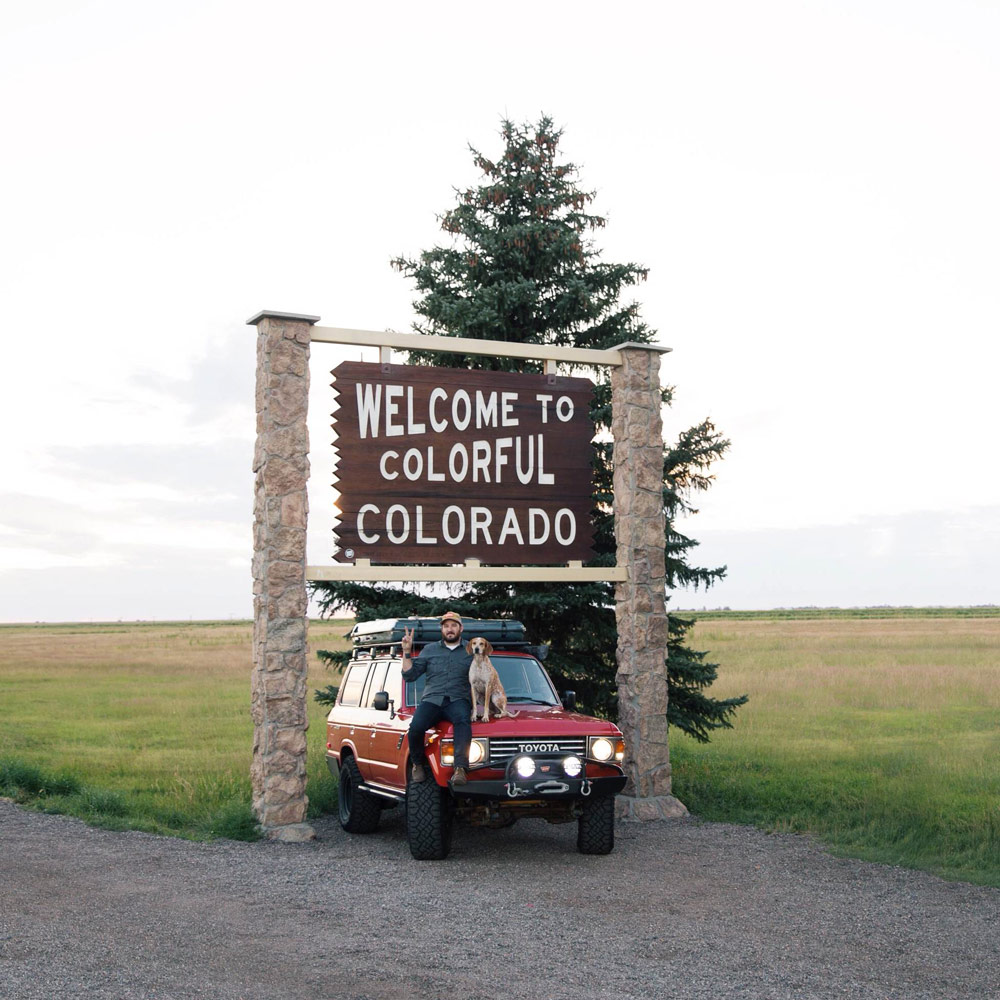
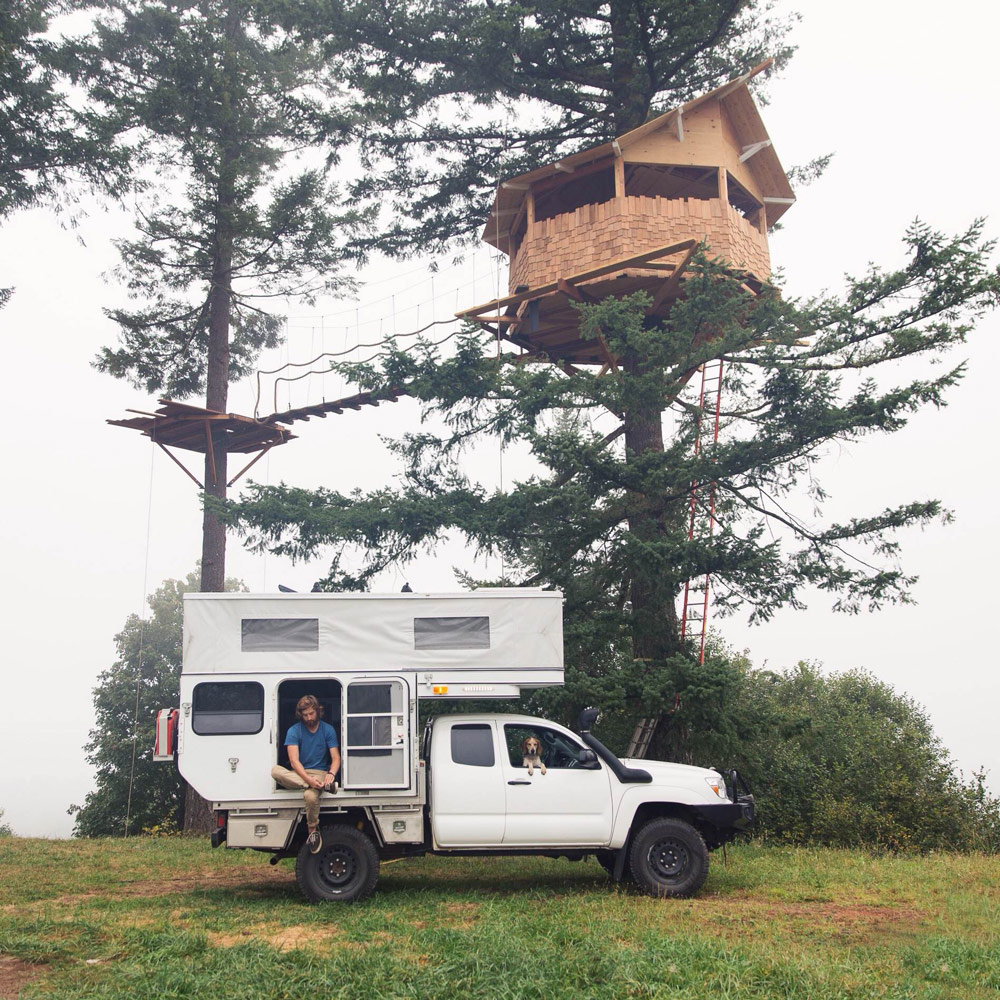
Are you creatively satisfied? And that being said, is there anything you’d like to do or explore in the next 5 to 10 years?
I’ve been reflecting on that. In my life right now, I feel like I’m experiencing a second great discontent. (laughing) I don’t necessarily want to fill all of my time with creating something for other people. I left my first photography job because I didn’t want to wake up at 60 years old, telling my grandkids, “This is what I did with my time: I shot handbags and necklaces.” I want to shoot for people, and getting paid to take photographs is wonderful—I’m so grateful for that—but I want to wake up at the end and know that I told people’s stories, connected with others, and celebrated life.
For the past two years, my work has been filtered through companies and corporations—it gets dulled down, changed, and compromised. That’s part of being a creative, but there is something uplifting and necessary about fully executing your vision with you alone as the content creator, art director, and responsible person. That’s when art is most valuable: it’s not about someone being able to buy and sell it, it’s about being able to give it as a gift—Robert Adams wrote about that a lot. I love the idea that there isn’t money trading hands: it’s just about our time together. Those images are going to last a long time and grow in value, and I need that work to be in equal proportion to the work I make to feed myself.
I need to refresh myself by going out into the world and shooting something I love, something that is worthy and necessary, but that doesn’t necessarily have commercial appeal. I want to shoot a project where I meet people who are approaching death who have animal companions; I would like to tell their stories, like I did with my grandfather. That would be special and meaningful work, but it’s the kind of project that I would need to self-fund.
As we get older and start reflecting on life, we become more open and introspective about what our time has meant, what a gift life is, and what we want to do with it. I find those feelings to flow more freely from our elders. In our culture, we put people in nursing homes. I’m not saying that’s inherently wrong, but we’re in a place in our society where we can’t have multigenerational households anymore because we have to keep working to feed ourselves and sustain our lifestyles. I would love to spend time with people in nursing homes and tell their stories.
This next year is about setting aside time to create and execute my vision, not creating work for the market. I don’t want to be negative about commercial photography, but I do want to be honest about it. I don’t think that’s a unique feeling, though—I imagine other people have experienced it too.
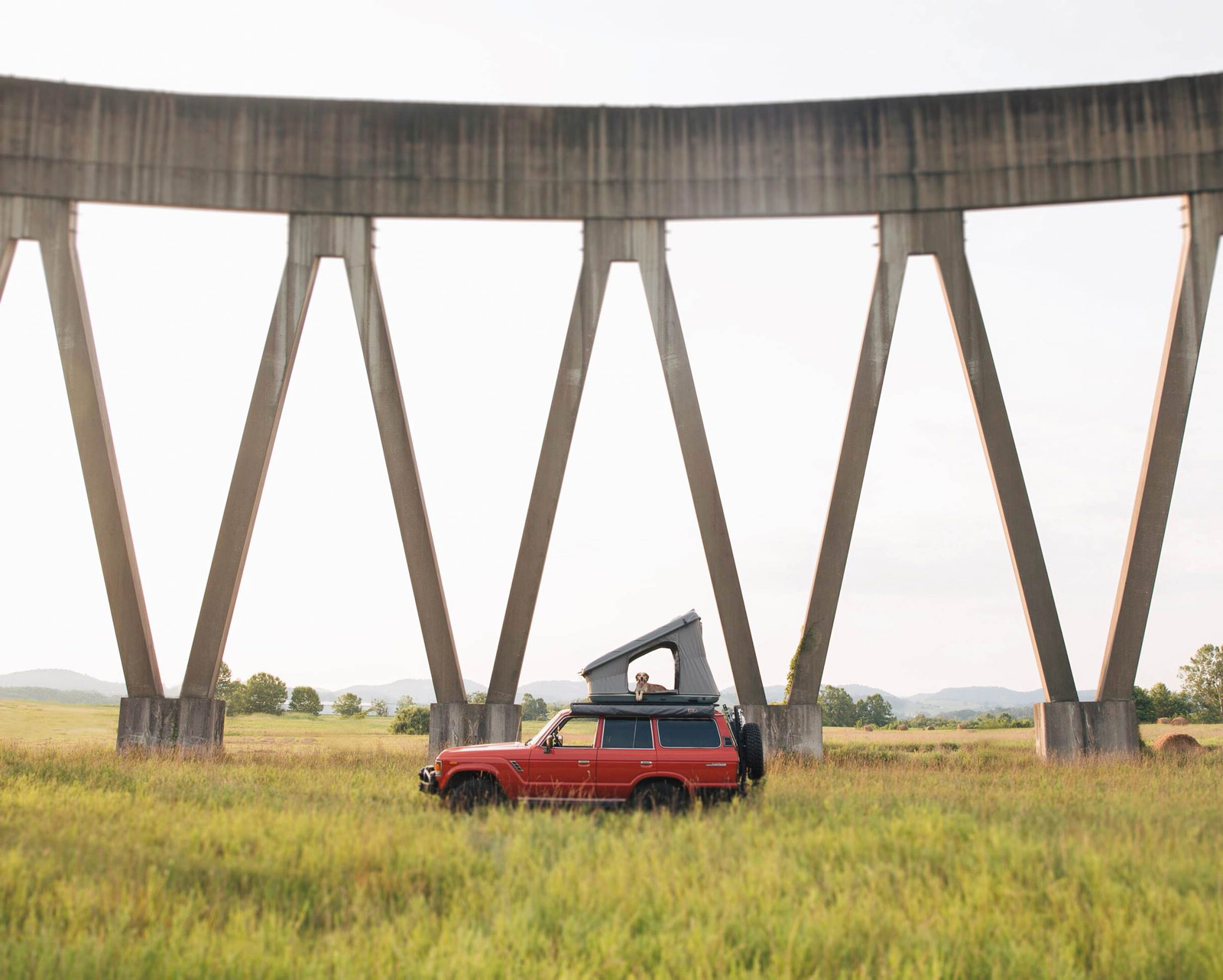
“Make work that isn’t easy, that makes you feel uncomfortable, and make a lot of it. If your photographs aren’t good enough, then you haven’t shot enough.”
What advice would you give to a young person starting out?
Make work that isn’t easy, that makes you feel uncomfortable, and make a lot of it. If your photographs aren’t good enough, then you haven’t shot enough. Time investment and quantity is a huge part of it. So much photography is instant now: instant editing, instant posting, instant likes, instant feedback. The slow process of investing your time into a single idea is the greatest path. You must fully push yourself into a project and see it through to the end. That’s something that social media hasn’t been able to do well: create bodies of work over a single idea, over the course of many images. If we did that more often, we would grow as image makers.
How does where you live impact your creativity? Or, in your case, how does traveling impact your creativity?
It’s actually hard for me to stay in one place because the motivation and inspiration behind the work I’ve been making over the past four years comes from experiencing new places. I’m able to discover a new wall, a new nook, a new person’s house, new light. That freshness is constantly flowing through my life, so sitting still and being in one house runs the risk of feeling static and stagnant.
That being said, I need a period of rest to recharge and become fully aware before I re-engage with people again so that it’s not so run-and-gun. I want to slow down and spend time with people. I want to make it about the work instead of constantly thinking, “I have somewhere else I need to be.” I’m excited about investing in a community and having a sense of place in Nashville.
Is it important to you to be a part of a creative community? Have you had that while traveling?
Yeah, Instagram has made me feel like I have a community. Over the past two years, I’ve been meeting up with people from that digital community in person. Encouragement from friends and people who are interested in photography, storytelling, and image-making on Instagram has kept me going.
However, I am excited about being invested in a place. People like me don’t make towns better, because we just flow through; the people who have kids, who go to PTA and city hall meetings do. Those are the people who make towns worthy places to visit and live. I want to give back in that way a little more and make the place that I live a little bit better.
What made you want to settle in Nashville? Do you have friends or an existing community there?
Yeah. I’ve been to a ton of places: every major US city and a bunch of small ones along the way. The biggest draw to Nashville is the people. The town itself isn’t the most beautiful—a lot of the architecture and buildings have been destroyed over the years—but it’s a vibrant city. It’s up-and-coming, and people are opening incredible shops and businesses. I have a cool friend base of supporters and encouragers there. I need a very small percentage of, “You’re being lazy,” or, “This isn’t good,” and a much larger percentage of encouragement, and I’ve found that balance in Nashville.
What does a typical day look like for you?
Right now, I’m traveling from Seattle to LA for Everyday Drivers, a project with Havoline Motor Oil—they’ve been great by sponsoring me and even putting a new engine in my truck! For this project, I’m taking one photograph a day of automobiles, the people who love them, and how they use them. It’s cool to dance on the ledge between documentary and commercial work, telling stories and shooting. My mantra has been to zip around between the mountains and the ocean, trying to encompass the spirit of what I’m doing; then I’ll post images on Instagram, which point to the bigger project. It’s been a mix of sharing daily adventures with my friends and followers, and meeting new people. That has been my typical day the past two weeks.
What are your current albums on repeat? Do you listen to music when you’re driving?
I’m not obsessed with any particular albums right now, which I think is a current trend with a lot of music listening. A good tip for people who are road tripping is to get XM Satellite Radio. It’s a ton of work to keep your iPhone synced up if you use Spotify or Rdio because it’s hard to find a good Internet connection on the road. If you’re streaming music, then you burn through a ton of data, and listening to the car radio is frustrating because you’re always moving in and out of range. But XM Radio is a dream. You can connect to it anywhere and they play cool music. For instance, Sirius XM U is like college radio—they play Grizzly Bear and all the hip stuff. Then there’s The Blend, which has everything from hits of the ’90s to the newest Taylor Swift song—it’s a great pop mix.
“…I want to shoot for people, and getting paid to take photographs is wonderful…but I want to wake up at the end and know that I told people’s stories, connected with others, and celebrated life.”
Do you have any favorite movies or TV shows?
Yeah. When I hit a good Internet connection, I binge. (laughing) I went through Game of Thrones, and it was incredible. One of my favorite shows is HBO’s Silicon Valley, which had the best season finale I’ve seen in a long time. I also like Freaks and Geeks and I grew up loving The Wonder Years. I’m drawn to angsty shows like that.
Do you have any favorite books?
Yeah, Travels with Charley: In Search of America by Steinbeck. There was a bit of controversy over whether or not he traveled to some of the places mentioned in the book; regardless, I love his prose, I love that he traveled with a dog, and I love the America he predicted and saw. John Steinbeck is my favorite author: I genuinely connect with him.
Do you have any favorite foods or meals from the road?
On the road, I go through a drive-through and order a medium iced coffee with no cream or sugar. It’s two bucks in most places, and in some places it’s only a dollar. That’s my coffee jam.
Eating on the road over the past year has dwindled down to not cooking at all, but I do try to keep it in the sub family with Jimmy John’s, Subway, etcetera. When I’m in California, I get In-N-Out Burger. To eat well on the road, you have to be proactive; when you’re shooting all day, you’re exhausted, and the last thing you want to do is cook something healthy and wash dishes.
Alright, last question. What kind of legacy do you hope to leave?
I was actually thinking about this recently, and I’m not that concerned about it. I’m okay with people not remembering me; I’m okay with not leaving an impact on the world. That’s not my calling. My calling is to have meaningful relationships with people, and that’s enough. If no one remembers my name after I die, it’s going to be okay because I had a great time with people while I was still around.
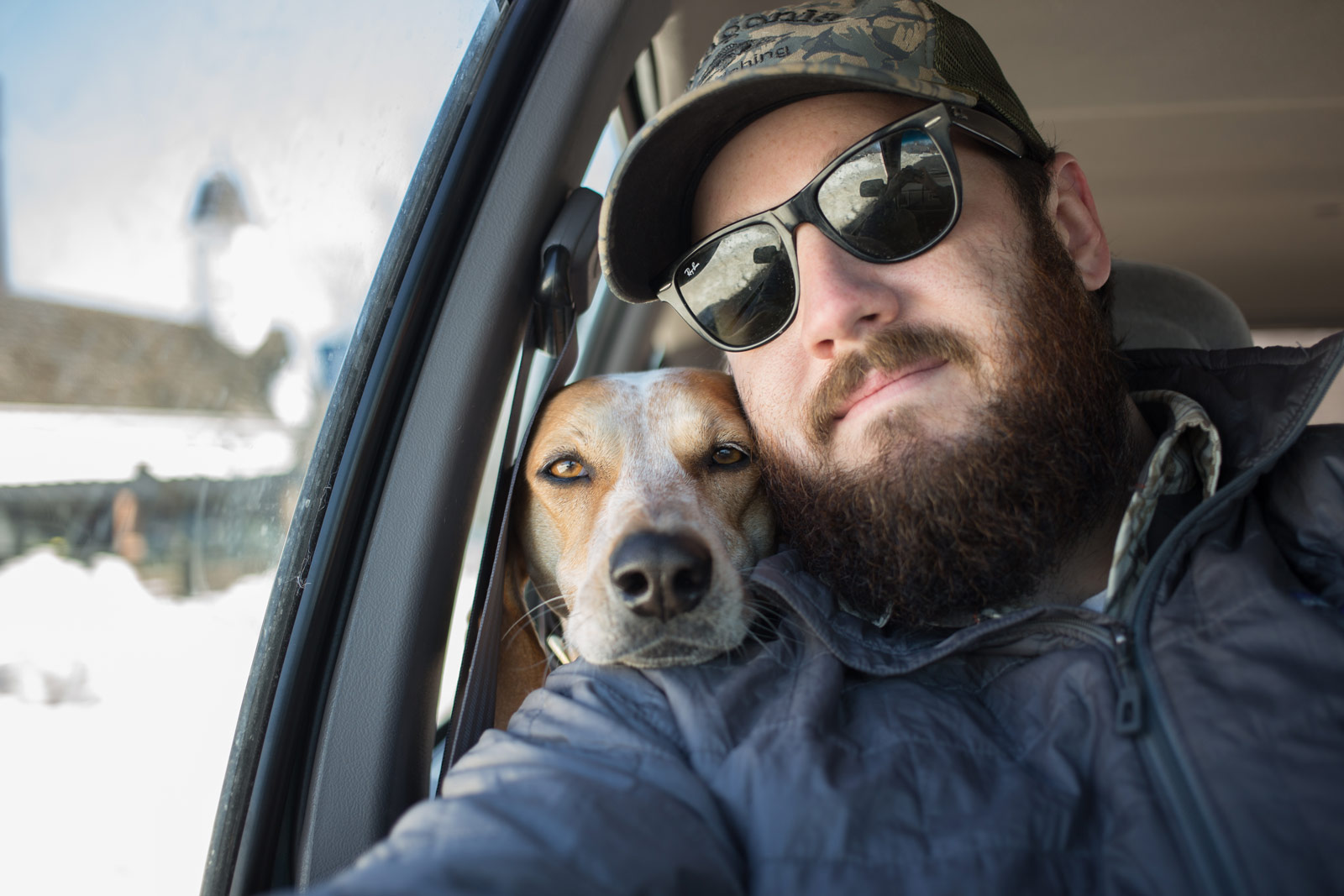
“I’m okay with people not remembering me; I’m okay with not leaving an impact on the world. That’s not my calling. My calling is to have meaningful relationships with people, and that’s enough.”
